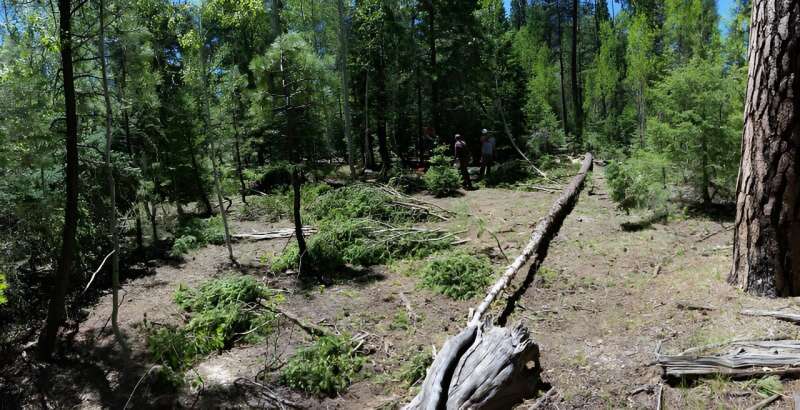This article has been reviewed according to Science X's editorial process and policies. Editors have highlighted the following attributes while ensuring the content's credibility:
fact-checked
trusted source
proofread
Report says new models will improve understanding of America's forests

Forests and the carbon they capture play a pivotal role in combating climate change, and a new report co-authored by NAU researchers is set to transform forest conservation efforts nationwide by providing new, more accurate models for calculating and predicting how much carbon they hold.
The U.S. Forest Service, along with an impressive list of research partners including those at Northern Arizona University, has introduced new National Scale Volume Biomass (NSVB) models that provide a consistent and scientifically accurate method to predict tree volume, biomass (a term that describes the collective mass of the woody parts of trees) and carbon content nationwide.
A key finding from the study is that newly developed models produce substantially higher values in biomass and carbon estimates when compared with previous models. The NSVB produces an estimate of 34.71 billion tons of biomass in U.S. forests, compared with 30.28 billion tons using previous methods, indicating a potential increase of 14.6% in aboveground tree biomass over what was previously estimated. This enhanced precision is achieved by using newly developed species carbon fractions instead of a constant conversion factor.
"This pioneering initiative is a multi-year effort involving multiple partners who meticulously compiled records from nearly 280,000 trees," NAU faculty and research team member Andrew Sánchez Meador said. "These models are testaments to the Forest Service's commitment to advancing scientific knowledge and ensuring the sustainable management of our nation's forests."
The findings associated with Arizona are particularly noteworthy. For Arizona, the estimated merchantable wood volume is expected to increase by 1.1%, while the estimated aboveground biomass is expected to increase by 21.7%.
"A striking finding is how the new models predicted increases in the biomass in tops and limbs, which increased by 115%," said School of Forestry Interim Executive Director David Auty, who also is on the team. "This increase has implications for previous carbon estimates, suggesting that the carbon storage capacity in these components of the trees has been previously underestimated."
The NSVB models also serve as a foundation for research on carbon, old growth and forest sustainability, and inform the implementation of strategies such as the national Wildfire Crisis Strategy. By providing a nationally consistent framework and biomass estimates for all tree components, the NSVB addresses inconsistencies in regional or state volume models.
"This groundbreaking research is an important step toward a sustainable future," Auty said. "It underscores the Forest Service's dedication to fostering the health, diversity, and productivity of the nation's forests and grasslands to meet the needs of present and future generations."
More information: James A. Westfall et al, A national-scale tree volume, biomass, and carbon modeling system for the United States (2023). DOI: 10.2737/WO-GTR-104
Provided by Northern Arizona University



















